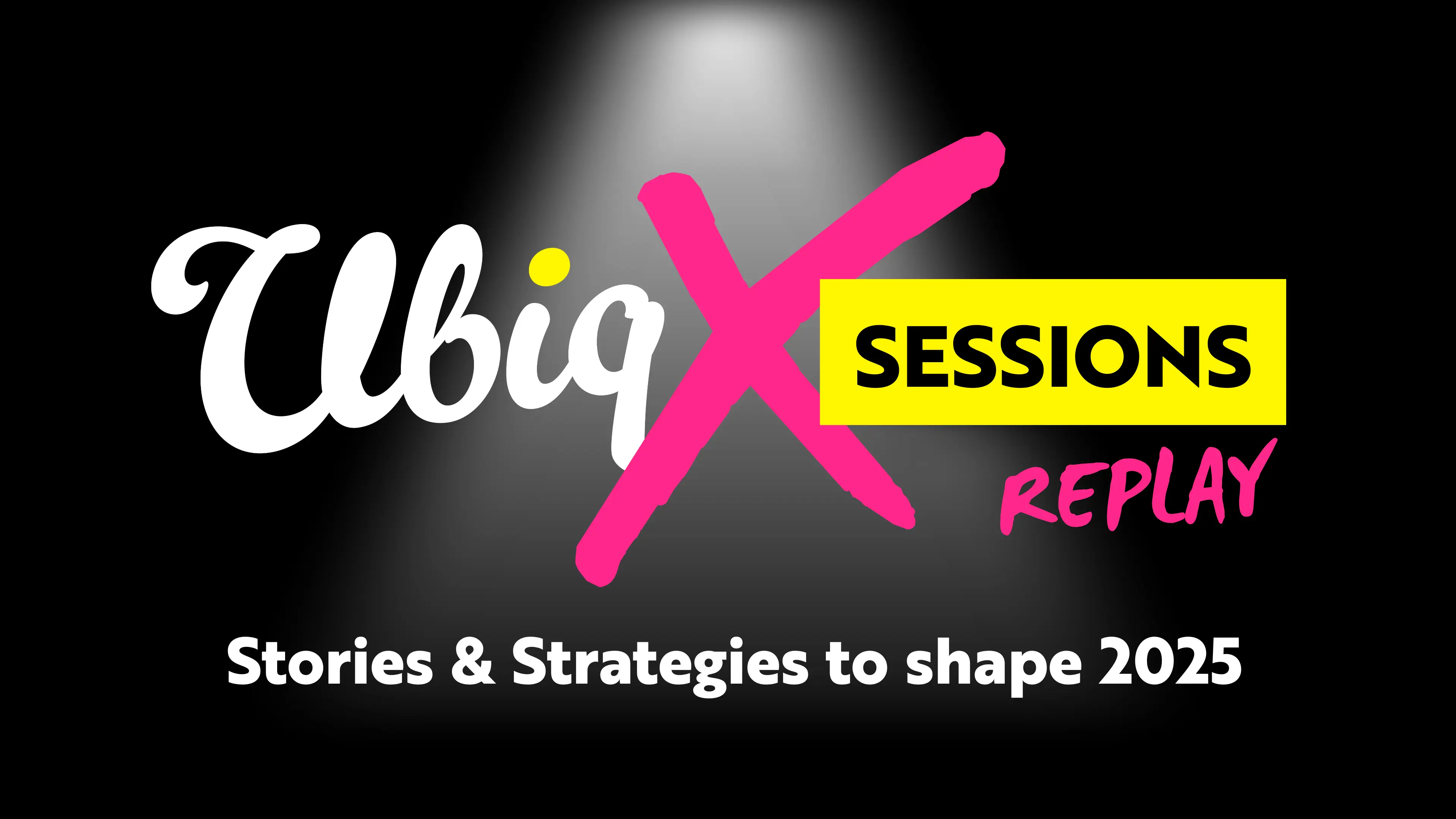You might have heard this buzzword going around lately - a “digital experience platform” - but what does having a Digital Experience Platform (DXP) mean for your school's marketing strategy? Don’t worry, we’re here to tell all.
History What is it? Appeal Google Analytics Case studies Admissions Conclusion
The history
DXPs have been on quite the journey.
You might remember the mid-2000s WCM (web content management) platforms, and have very likely since experienced several iterations of a CMS (content management systems). In a nutshell, DXPs are CMS’ big brothers. CMS systems allowed schools to publish online, but DXPs are much more capable; they allow schools to meet ever-changing customer needs, to segment their audience to deliver an individual experience, and manage the entire digital ecosystem.
Let’s break it down.
- Content Management Systems (CMS): used to create, manage and publish content
- Web Management Systems (WMS): used for website design, development and optimisation
- Digital Experience Platforms (DXP): used to seamlessly integrate and centralise all customer touchpoints
In the age of DXPs, we’re seeing our clients move from operating within several different marketing platforms to being able to kick those subscriptions to the curb with one centralised system. Cool, right?
We recognised the potential this tool had to revolutionise the education marketing space, so we built our DXP as part of our wider UBIQ AMAIS system (I’ll come onto that shortly) specifically to meet the needs of the school sector and tailored it for schools.
So... What is it?
Have you ever faced a situation like this?
Imagine a friend texts you raving about how much they love Nike’s latest shoe release and, within minutes, mid-doomscrolling, there’s an advert for Nike on your Instagram feed? In instances like this, there’s a DXP at work.
A DXP is how organisations use data to their advantage. If you go ahead and purchase (depending on how nice of a friend you are) it’s a win for Nike - they’ve converted you based on data harvested by the DXP.
Here at UBIQ, our DXP is just one small component of UBIQ AMAIS, our one-of-a-kind marketing platform with AI and Machine Learning built into the foundations. Other elements include:
- Content management (CMS): think real-time content recommendations and intuitive multi-channel content delivery
- Digital asset management (DAM): your hyper-organised colleague - this system tags, categorises and stores all your marketing collateral efficiently
- Customer data (CDP): your single source of truth on all customer data
- Messaging and communications (MCP): create tailored emails based on customer data, or even simple SMS or Whatsapp campaigns
- Payments (PAY): UBIQ PAY is one of our latest innovations - allowing schools to optimise their payments process by reducing unnecessary friction
In practice, this system powers school marketeers to enhance their digital marketing strategy from one singular dashboard, armed with data and communications tools to increase high-quality admissions enquiries and enhance the customer experience.
What's the appeal?
Digital Experience Platforms (DXPs) offer a wealth of different tools at your disposal: content management, analytics, personalisation, customer data, and messaging and communications to name but a few.
For example, in UBIQ AMAIS, our DXP tracks every individual site user’s touchpoints and pairs it to their CDP (Customer Data Platform) contact profile, building a hyper-valuable lead list for your school. Our clients use UBIQ AMAIS to make highly informed decisions about how to approach their customers, from what type of language to use all the way down to understanding their social activity.
Imagine being able to review your analytics, segment website performance according to different personas, have access to enhanced behavioural information about your prospective families, and manage workflows from one dashboard. UBIQ AMAIS makes all of this (and more) possible.
Digital Experience vs. Google Analytics
“But we rely on data from Google Analytics, we don’t need a DXP!” I hear you plea.
The truth is, schools have never been able to derive real value from analytics platforms like Google Analytics. Why? Because these platforms don’t provide context to the data - nor do they effectively differentiate prospective parents from current parents, alumni from donors, and job seekers from the wider community.
The UBIQ AMAIS platform’s DXP was built with schools in mind. The DXP tracks every touchpoint both on and offline for your different audiences, dynamically segments them into personas and gives marketing and admissions an in-depth view of each customer’s behaviour, demographics, traits and engagement as well as how each digital experience can be further improved and optimised.
So, it’s not surprising that UBIQ AMAIS and our DXP has become extremely valuable for schools across the globe when it comes to tailoring their schools’ marketing approach, with the DXP telling the website how to behave and engage with different audiences - all based on data.
How does it work?
I'm sure you'll agree, this all sounds magical. But what about the results?
The possibilities are vast when a DXP is adopted into an organisation - and so many organisations are rapidly adopting these platforms. Let's take a look at some education-based examples:
- Georgia State University wanted to improve student retention and admissions targeting. The solution: deploying predictive analytics to identify those students at risk of dropping out and targeting tailored interventions towards these students. By doing so, GSU saw a 30% increase in graduation rates over a 10-year period and were able to improve admissions targeting by analysing applicant behaviour patterns.
- The University of Michigan used AI-powered chatbots to answer applicant questions around the clock, meaning admissions enquiries became increasingly streamlined and response times reduced - all keeping the customer happy. The results were astounding: applicants enjoyed 50% faster response times, improving applicant satisfaction and conversion rates.
- When Southern New Hampshire University wanted to boost enrollment through personalised outreach, building out a new integrated ecosystem laced with AI was just the ticket. Through implementing AI-driven marketing automation campaigns, SNHU were able to hyper-target prospective students. Like our other two case studies, the results speak for themselves: a 20% increase in enrolment over 3 years and a 35% higher engagement with tailored email campaigns.
So we’ve proven that it works. But how might it help your school recruit more successfully? We’ve got the answer to that too.
How can this positively impact school admissions?
The DXP within the UBIQ AMAIS platform can revolutionise the way schools approach admissions by creating a seamless, personalised journey for prospective families.
With the ability to track interactions across multiple channels, schools can identify key touchpoints and tailor their communications accordingly. For example, when a prospective parent visits the admissions page, downloads a prospectus, and later opens an email invite to an open day, UBIQ AMAIS can trigger personalised follow-ups that nurture the parent through the decision-making process. Here’s a few data points that make DXPs all the more enticing:
- ML (machine learning) models are all about enhancing the DXP’s capabilities. These models analyse historical data to predict enrolment likelihood with 85% accuracy, ensuring your admissions teams aren’t wasting their efforts and enabling targeted outreach.
- AI-driven content suggestions (think scholarship alerts and virtual tours) are also proven to boost application completion rates by 25%.
- Lastly, segmented email campaigns achieve 35% higher open rates and 20% more conversions.
In a nutshell, DXPs provide invaluable insights by segmenting audiences based on behaviour, interests, and demographics and allow schools to work more efficiently in their marketing and admissions processes. DXPs are being used by educational institutions across the globe to focus their marketing efforts on high-intent prospects, reducing wasted effort and improving enrolment conversion rates.
With UBIQ AMAIS in their artillery, schools can move beyond one-size-fits-all messaging and instead create engaging, data-driven experiences that resonate with each family individually. Our partnering schools think that’s pretty cool (and we do, too).
Conclusion
Digital Experience Platforms are no longer a nice-to-have; they are essential for schools looking to stay competitive in a rapidly evolving digital landscape.
By centralising data, providing deep audience insights, and enabling hyper-personalisation, the DXP within UBIQ AMAIS empowers schools to create meaningful connections with prospective families and drive enrolment success. So, the question is: is your school ready to take the leap into the future with a DXP?

Maddie Lingard
Senior Content Marketing Manager










